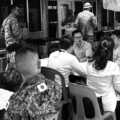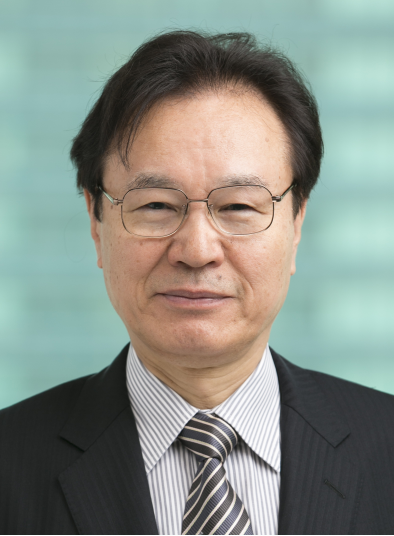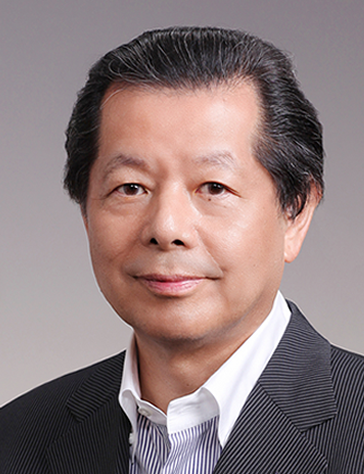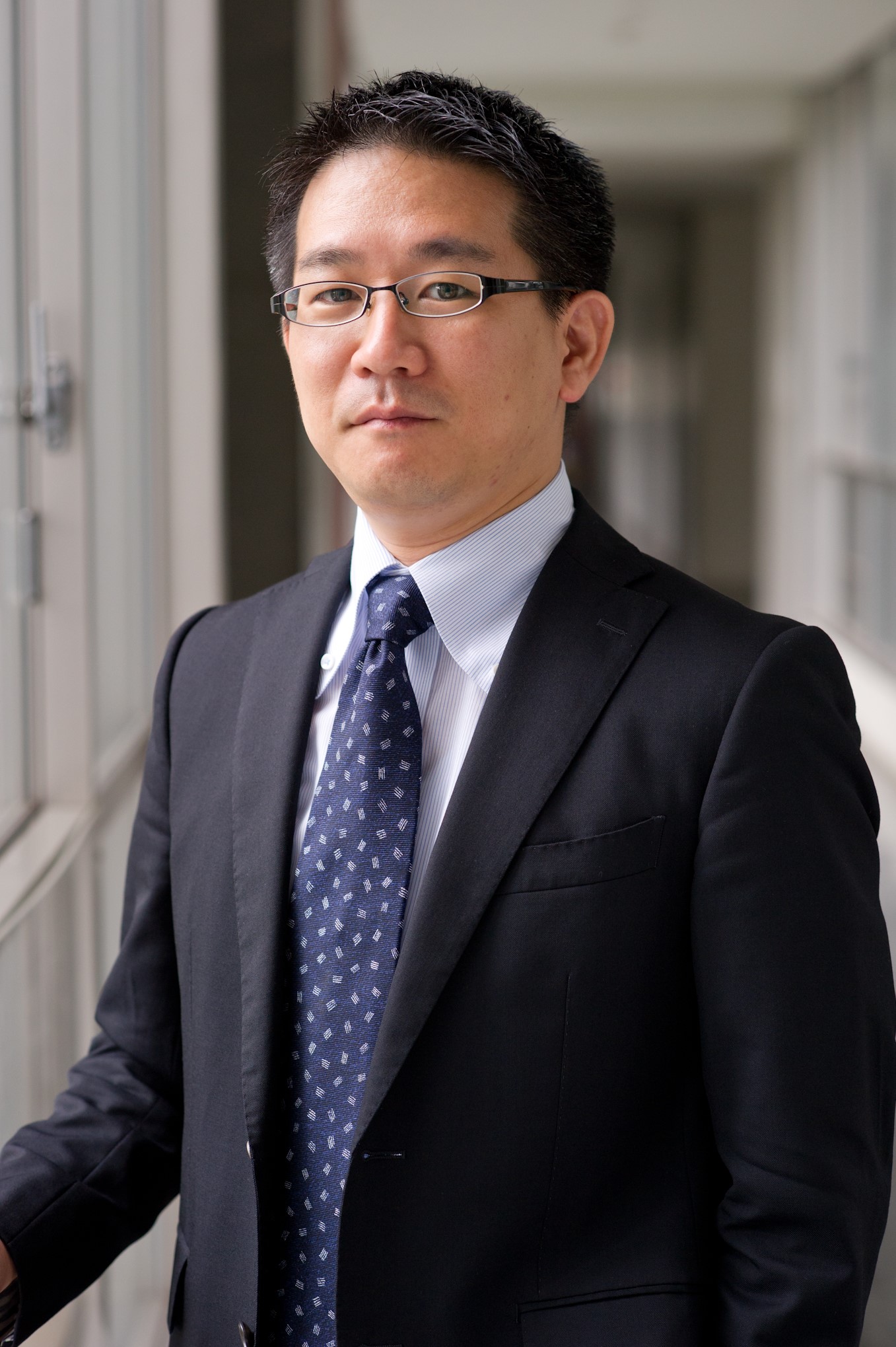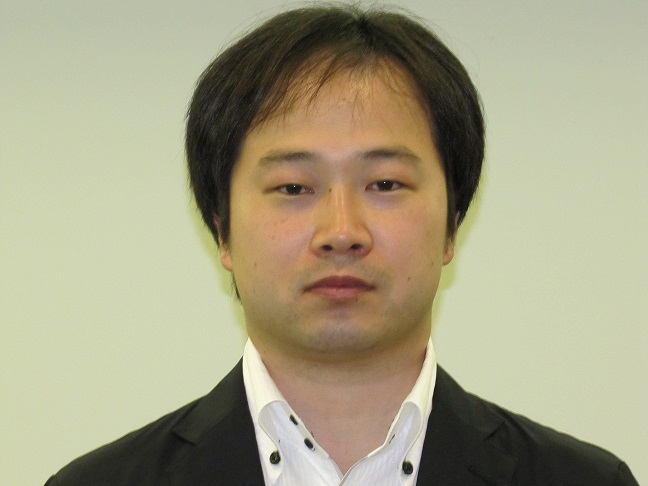Accepting Refugees: Interface between border control and social integration
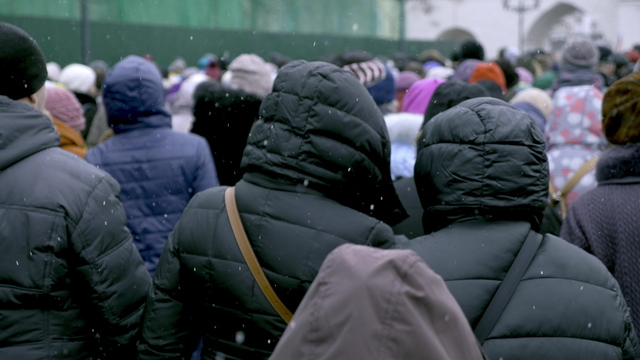
Russia’ s invasion of Ukraine caused many people to flee the country. Some of them ended up in Japan, where the Japanese government adopted an extremely proactive and generous policy of accepting them. The author points out that “the support measures that have been provided exclusively for Ukrainians by the entire Japanese society since March 2022 must be the minimum standard and made available to all other forced migrants.”
Photo: BorovikovDmitrii / PIXTA
World Refugee Day is celebrated every year on June 20th. Every year around this time, the media tend to run features on the global refugee situation and/or Japan’s asylum policy. Although there is nothing wrong about the coverage, it often appears that the media do not necessarily have a sound understanding of even basic concepts such as the definition of refugees and the methods and logic surrounding asylum policies.
In fact, my general observation is supported by statistical evidence. Every year around World Refugee Day in recent years, the global market research company Ipsos (Ipsos Group S.A.) has published a global survey, “WORLD REFUGEE DAY: Global attitudes towards refugees.”[1] According to the survey results, Japanese respondents are not especially discriminatory or closed to refugees when compared with respondents in other countries. However, the results consistently show that the percentage of Japanese respondents who answered “don’t know” or “none of the choices offered,” or who did not answer the questions, was significantly higher than in other countries surveyed (52 countries around the world in 2024). Ipsos concluded in the Japanese release[2] that “awareness and understanding of refugees in Japan is lower than in other countries, and many people do not have accurate information about refugees.”
In order to contribute to ameliorating this situation, my monograph Naze Nanmin wo Ukeirerunoka—Jindo to Kokueki no Kosaten (Why accept refugees? — The intersection of humanitarianism and national interests) was published in the Iwanami Shinsho series of books by the Japanese publisher Iwanami Shoten on June 20, 2024. I carefully devoted to the book various perspectives gained through my first-hand experience in refugee policy both in practice and research for more than 20 years. Due to space limitations, this article will only touch on the essence of some parts of the book, and will provide a conceptual explanation and share the gist of discussions on what it means to “accept refugees.”
1. Phases of border control and social integration
From a bird’s eye view, the act of “refugee admission” can be broadly divided into two phases. The first phase is to decide which foreign nationals should be protected as refugees (or conferred other complementary status) and granted regular residence status. The second phase is the process by which refugees (or other forced migrants) with regular residential status integrate in Japanese society. The former is fundamentally an act that can only be performed by a sovereign state and can be considered as a “line” of border control. In Japan, the Ministry of Justice (Immigration Services Agency) exercises the exclusive authority based on the Immigration Control and Refugee Recognition Act (Immigration Control Act). In contrast, the latter can be seen as multifaceted “stages” of social integration, as will be described later.
In terms of the lines of border control, those outside any of the lines are asylum seekers who are already in the Japanese territory but do not have any residential status. Once inside the outer-most line, still several lines are drawn between those who have some kind of legal residential status. Closest to the outer-most line are those who have applied for asylum but are still waiting for an official decision. Many have conferred upon them a residential status called “Designated Activities” (which may or may not allow them to work). One line inside are those whose application for refugee status was rejected but who are allowed to stay in Japan on humanitarian grounds. Still further inside another line are those who are officially recognized by the Minister of Justice as refugees under the 1951 Convention on the Status of Refugees (hereinafter 1951 Refugee Convention). In addition, according to the revised Immigration Control Act passed in June 2023, a new status called “subsidiary protection” (simply put, a person who is not a refugee under the 1951 Refugee Convention but who has fled indiscriminate violence during a conflict) was created and enacted from December 2023. They can be regarded as quasi-refugees in Japan. Once forced migrants are granted legal residential status—whether it be as refugee, beneficiary of subsidiary protection, or on humanitarian grounds—they can participate in a wide variety of socio-economic activities including education, employment, paying taxes, and participating in the social security system, among others. They could even apply for naturalization and “become” a Japanese citizen, in the medium to long term. If they actually obtain Japanese nationality, they will enter a space where there is no legal “line” separating them from native Japanese.
Theoretically, forced migrants are expected to move inside the “line” of border control, which is the first phase, and then experience the second phase of social integration as a member of Japanese society. In reality, many foreign nationals without residential status (estimated to be 100,000 at most) have been living as de facto members of Japanese society for many years before or without having been given legal residential status. Thus, crossing the lines of border control and experiencing the stages of social integration do not always take place in consecutive order.
2. Six methods of accepting refugees and their challenges
There are various ways of accepting refugees in terms of letting them cross the “line.” In fact, Japan has implemented six main ways of accepting refugees over the past 50 years. These are: (1) Acceptance of Indo-Chinese refugees, (2) refugee status determination (RSD) of those who spontaneously come to Japan and lodge an asylum claim, (3) resettlement, (4) acceptance of refugees as international students, (5) evacuation of (former) local staff from Afghanistan, and (6) acceptance of Ukrainians displaced by the Russian invasion.
(1) Acceptance of Indo-Chinese refugees
First, a total of 11,319 Indochinese refugees (from Vietnam, Laos, and Cambodia) were allowed to settle in Japan between 1978 and 2005. Of these, 3,536 were people who had drifted ashore in Japanese territorial waters on their own or had been rescued at sea by Japanese or foreign ships and disembarked in a Japanese port. Another 4,372 were resettled to Japan after having first taken temporary refuge in other Asian countries neighboring the three Indo-China countries, and another 2,669 were people who were legally evacuated directly from Vietnam as family members of Vietnamese already living in Japan (family reunification scheme). The remaining 742 were students who had been studying in Japan before the political upheavals in the three Indochina countries and were granted long-term residence as they could not return home (refugee sur place).
The conventional wisdom is that Japan accepted these Indo-Chinese refugees mainly because of external pressure (gaiatsu) from the U.S. government during the Cold War, although the author’s research challenges this simplistic narrative. Be that as it may, this Indo-Chinese refugee admission was an important early period which led to the establishment of the institution of Japan’s asylum policy which continues to this day.
(2) Refugee status determination (RSD) of asylum seekers spontaneously arriving in Japan
The next asylum policy is the examination of individual asylum applications submitted to the Ministry of Justice by those who spontaneously arrive in Japan. Japan acceded to the 1951 Refugee Convention in 1981 after Diet approval, and the Immigration Control Act was enacted as domestic legislation to implement RSD.
From January 1982 to December 2023, 105,487 foreign nationals applied for refugee status in Japan. Of these, 1,420 were recognized as Convention refugees. In addition, 6,054 people were found not to meet the narrow definition of Convention refugees but were granted special permission to stay (SPS) in Japan on humanitarian grounds. Convention refugees and those granted SPS are sometimes referred to together as the “asylum cases.”
Some readers may have seen general news comparing refugee recognition rates between Japan and other countries; for instance, the refugee recognition rate in Canada was once close to 50%, while Japan’s rate is remarkably low at 1% or 2%. In 2023, 11,643 people received positive or negative decisions by the Japanese immigration authority on their asylum claim (including decisions at the first instance and the appeal level). Of them, 303 were recognized as Convention refugees, which brings the refugee recognition rate to about 2.6 percent that year. In 2017, the former was 15,752 and the latter was 20, resulting in a recognition rate of approximately 0.13%, the lowest on record. (A common mistake is to divide the number of refugees recognized in a given year by the number of asylum applications in the same year. This would result in a mismatch between the numerator and the denominator, since asylum decisions are not necessarily made in the same year as the application.)
In any case, it is true that Japan’s refugee recognition rate is extremely low when simply compared with other countries. However, it makes little practical sense to treat refugee recognition as a matter of “numbers” and to criticize the low recognition rate per se.[3] If everyone who applied for asylum in Japan met the Convention’s refugee definition, the refugee recognition rate must be 100%. Conversely, if no one met the definition, a refugee recognition rate could be 0%, at least in theory. Sometimes we see tables comparing the refugee recognition rates of asylum seekers from the same country of origin (such as Turkey) in other countries (such as Canada, Germany, France, Australia, etc.). While this might be slightly more informative than a simple comparison of refugee recognition rates, one cannot make a definitive judgment based solely on where asylum seekers come from. The RSD process must take into account both subjective fear felt and demonstrated by each asylum-seeker, as well as objective information on the general situation in the country of origin.
In any case, in my published monograph, I examine in detail the question of “why Japan’s refugee acceptance rate is low.” What is important is not the numerical value of the refugee acceptance rates, but rather the standards and procedures for RSD; in other words, the issue is quality rather than quantity.
Fortunately, there is now a prospect that the RSD quality may be partially improved. In March 2023, the Immigration Services Agency issued a “Guide to Determining Refugee Eligibility” for the first time since Japan acceded to the 1951 Refugee Convention in 1981. This first domestic “Guide” is a rather succinct document (30 pages) which leaves some room for improvements, and thus will not solve all the problems in Japan’s RSD system immediately. However, it is at least a first step towards improvement of Japan’s RSD quality. It will be important to steadily implement the positive changes proposed by the Guide and to constantly address the remaining issues, taking into account jurisprudence in other countries and developments in international law.
(3) Third-country resettlement
A completely different method of accepting refugees is third-country resettlement. A Cabinet Approval in December 2008 established a policy to actively “bring” to Japan every year about 30 refugees from Myanmar taking temporary refuge in Thailand. For five years from 2010, only those residing in Thailand were eligible, but in 2015 the policy was expanded to include those residing in Malaysia. In 2019, it was decided to expand the scope further to admit to Japan every year 60 refugees staying in many other Asian countries, without ethnicity-related condition. This resettlement policy was temporarily suspended due to border closures during the COVID-19 pandemic. By the end of 2023, a total of 122 households comprising 305 Myanmar refugees resettled in various parts of Japan. These refugees are people who have already been recognized as refugees by the United Nations High Commissioner for Refugees (UNHCR) in the first countries of asylum, such as Thailand and Malaysia, and have been recommended for resettlement in Japan. Although they have not been recognized by the Japanese government as Convention refugees, they are granted the same residential status as Convention refugees and have almost the same rights and entitlements.
The resettlement policy is an active approach to accepting refugees who are still outside Japan’s jurisdiction, and Japan is not obligated to implement it under international law. It is highly commendable that the Japanese government has voluntarily adopted this method of acceptance, and that South Korea, inspired by Japan, also began the same policy in 2015. However, compared to other G7 countries, Japan’s annual resettlement quota (60 people) is extremely small, and there is no sign of relaxing the restrictive eligibility criteria that refugees be “those who have the ability to adapt to Japanese society and are expected to obtain employment sufficient to support themselves” (and their spouses and unmarried children). This deviates from the original purpose of resettlement, which is for “developed countries” to bear their fair share of the responsibility for protecting the most vulnerable refugees, the vast majority of whom are hosted by “developing countries.” In fact, it is not uncommon for resettlement countries to set aside special quotas each year for extremely vulnerable refugees with physical disabilities, serious illnesses, mental illness, or single-mother families with many children. It may be time for Japan to reconsider its restrictive eligibility criteria.
(4) Acceptance of refugees as international students
Another method is to admit refugees as international students. In response to the global attention given to the so-called Syrian refugee crisis, the Japanese government, as the chair and host of the G7 Ise-Shima Summit in May 2016, also announced a policy to accept up to 150 Syrians as graduate students over the subsequent five years. By the end of 2023, 127 Syrians (with accompanying family members) have received post-graduate education in Japanese universities thanks to governmental scholarships fully paid via the Japan International Cooperation Agency (JICA) or the Ministry of Education, Culture, Sports, Science and Technology. Upon obtaining a Master’s degree, some have successfully found employment in so-called first-class companies. Based on the achievements of the JICA program, a similar program will be implemented in Myanmar starting in 2024. In parallel with these public programs, private initiatives to host international students have also begun, such as those by the Japan Association for Refugees (JAR) and the related organization Pathways Japan.
It is certainly commendable that Japan has accepted as international students talented young people who have been unfairly deprived of the opportunity to study due to sudden political upheaval in their home countries. Such elite youth will be precious “human resources” who can contribute not only to Japan but also eventually to the reconstruction of their home countries. They could serve as a bridge between Japan and their home countries after the situation in their home countries improves. It is a win-win-win initiative. Globally, this method of admitting refugees has been called “Complementary Pathways” and actively promoted by the UNHCR in particular over the past 10 years or so.
However, irrespective of these positive aspects, this policy allows for selecting only those who have already received a certain level of higher education, have foreign language skills such as English, and are in good health. The policy fundamentally adds various conditions to the original definition of a refugee, to be protected in Japan. If we ponder it critically, the policy is one of accepting only those in the prime of their working lives who are convenient for Japanese society. In fact, the policy of accepting refugees as international students, skilled workers, or family members of those already settled in the destination country is widely and fast spreading among other “developed countries,” as well. The global number of those admitted via Complementary Pathways is approaching the level of those recognized as Convention refugees. We need to examine carefully whether this trend might not jeopardize the humanitarianism that should lie at the core of the original principle of asylum policies.
(5) Evacuation of (former) local staff from Afghanistan
Next is the evacuation of Afghan local staff.
Japan has been a major donor country providing various types of large-scale assistance to Afghanistan for 20 years since 2001. Not only the Japanese Embassy and JICA, but also many Japanese NGOs have carried out important development cooperation projects on the ground and employed many local Afghan staff. Afghans who worked for foreign forces, including Japan, have been considered “Kafer/Kafir” (infidel or traitor) by the Taliban and local extremists. When the Taliban quickly took control of the entire country in August 2021 and foreign forces withdrew across the board, the risk to their lives increased dramatically.
Such local staff are not yet refugees, legally speaking, because they are still in their home country of Afghanistan. However, they are potential refugees in the sense that they are at serious risk of persecution by the local authorities (e.g. the Taliban) for being a member of a “particular social group” who collaborated with a foreign organization. This gave rise to a strong moral responsibility particularly for the (former) employer country to actively accept them. Other countries that had experience in evacuating local staff or had sent troops to Afghanistan boldly and immediately evacuated and accepted (former) local staff and their families on a large scale. However, Japan, lacking such experience, military power and political will, lagged far behind. Incidentally, the terrorist attack near Kabul International Airport in late August further complicated the Self-Defense Forces’ evacuation plan, which eventually failed.
After many twists and turns, Afghan nationals who were working at the Japanese Embassy or JICA as of August 2021 and their immediate relatives, a total of about 400 people, were allowed to come to Japan with the support of the Ministry of Foreign Affairs. In addition, it is estimated that more than 450 Afghans who did not fall under the government’s extremely restrictive evacuation conditions were somehow allowed to evacuate to Japan, with the proactive and persistent support from former Japanese colleagues, employers, or supervisors, acting as guarantors. My recently published Japanese monograph unpacks more details.
Compared to the evacuation policies of other donor countries, Japan’s evacuation record is extremely poor, exclusive, and inhumane. The notorious reputation of Japan’s evacuation policy quickly spread among the (former) local staff, to the point where many talented local staff are now determined never to work for Japan again. In short, the Japanese government itself damaged Japan’s national interests.
It is true that the Self-Defense Forces Law was partially amended in April 2022 to allow at least incumbent local staff working for overseas diplomatic missions and independent administrative institutions (JICA and JETRO [Japan External Trade Organization]) together with their families to be transported on Self-Defense Forces aircraft even if there are no Japanese passengers on board. However, the support process after boarding the Self-Defense Forces aircraft remains non-existent. The author has been underlining the importance of formulating a policy to evacuate local personnel since 2014, when Japan’s Peace and Security Legislation was being debated. If Japan is to continue to take pride in “international cooperation with local visibility” and a “proactive contribution to peace,” it is an urgent task to create a system for the evacuation and reception of (former) local staff and their families.
(6) Acceptance of Ukrainians
The last is the extremely proactive and generous policy of accepting Ukrainians displaced by the Russian invasion.
Less than a week after Russia began its invasion of Ukraine at the end of February 2022, Prime Minister Kishida Fumio announced that Japan would actively accept Ukrainian “evacuees” into Japan. Since then, generous support measures unparalleled in Japan’s previous refugee policies have been implemented swiftly, on a large scale, and boldly, only for Ukrainians. As of the end of April 2024, more than 2,600 Ukrainians were admitted to the country, and all kinds of imaginable support measures have been provided exclusively to Ukrainians by both the public and private sectors.
Compared to the above-mentioned asylum policies, Ukrainians are given preferential treatment even over Convention refugees. My Japanese monograph provides more detailed comparative analysis, but the selective generosity gave rise even to concerns that it may be perceived as “discrimination” against forced migrants other than those from Ukraine. By the end of February 2024, more than 600 Ukrainians have already been provided the new subsidiary protection and thus it is expected that their treatment will be equal to that of Convention refugees in the medium term. In any case, the extremely generous support for those displaced from Ukraine offered by both the public and private sectors have demonstrated that “Japan could do this much if it wants to.” The support measures that have been provided exclusively for Ukrainians by the entire Japanese society since March 2022 must be the minimum standard and made available to all other forced migrants in the future.
3. Interface between the lines of border control and multifaceted stages of social integration
As outlined above, forced migrants have mainly crossed the six different lines of border control over the past five decades and have been conferred regular residential status, which may be viewed as the first phase of admission policy. The second phase is the process by which refugees and other forced migrants who have been granted regular residency become part of Japanese society.
Since the Indo-Chinese refugee era, the “Refugee Assistance Headquarters” (RHQ) has been commissioned by the government to provide a settlement support program (572 hours of Japanese language training and 120 hours of social and cultural orientation). The program is offered for Convention refugees, resettled refugees, and persons given subsidiary protection for about six months.
Upon completion of the settlement program, (quasi-)refugees start their supposedly independent life as a student or worker. Continuous public support from the local government where the refugees live is essential at the initial phase, and RHQ staff and local settlement support staff continue to help them learn Japanese and find jobs for the next five years. However, the crucial key to their daily lives from then on will be the understanding and cooperation of civil society; that is, the private sector. For example, refugee children cannot attend school without a school that will accept them, and adults cannot work without a company that will hire them. Also needed are landlords who provide cheap housing; nurseries, kindergartens, supermarkets, and hospitals that are kind to foreigners even if they do not speak Japanese; neighbors willing to help them when they are in trouble; friendly classmates, parents of refugee children’s classmates, and colleagues at work, and so on. They all play an infinitely crucial role. There are almost no Japanese citizens who are completely unrelated to the process of refugees becoming part of Japanese society through the various integration “stages.”
As mentioned above, the number of people who have not been recognized as Convention refugees but have been granted special permission to stay in Japan for humanitarian reasons has exceeded 6,000 in the period from 1991 up to the end of 2023. Although these people cannot participate in the RHQ’s Settlement Support Program, they are basically living in Japan for the medium to long term. For those who are not eligible for the RHQ program, or who need help in their daily lives after the official public support ends, many NGOs, NPOs, religious organizations, and so on have provided extremely important support since the Indo-Chinese refugee era.
As regards the “lines” of border control, only a very limited number of people, such as Immigration Service staff, Refugee Examination Counsellors (RECs), asylum lawyers, and judges, can be directly involved in the decision as to which foreigners will be recognized as refugees. Due to privacy and security concerns, it is not appropriate to disclose personal details publicly. It is inevitable that individual RSD procedures may appear somewhat undemocratic and secretive, to a certain extent.
When it comes to the second phase of social integration, on the other hand, there is a limit to what central government officials or judges can do on a day-to-day basis. The main players in the second phase are those in the private sector, and civil society. The key is how the central government can support the activities of the private sector in settlement areas through legislation and financial measures. A multifaceted and multi-layered division of roles between central government ministries and agencies, local governments, businesses, NGOs and NPOs is essential.
Such multifaceted stages of social integration are not only important in themselves but also for the purpose of sustaining a liberal and humane border control. This is what I call the interface between the lines of border control and the stages of social integration. My Japanese monograph unravels the secrets of Norway’s humanitarian refugee admission policies in detail. To sum up, my field research found that a humanitarian refugee admission policy cannot continue if the social integration of refugees does not work well. In other words, humanitarian border control policies and successful social integration are two sides of the same coin.
4. A refugee policy taking precedence over immigration policy
This paper focuses mainly on refugee policy, but the above perspective on the relationship between “lines” and “stages” also applies to immigration policy in general. And at least in Japan, public integration policy for refugees is one step ahead of that for other migrants.
For the past 30 years, Japan has had the “worst”[4] immigration policy, accepting many actual long-term migrants while pretending that this has nothing to do with immigration policy. Since the migrants are perceived to be “guest workers who will return to their home country someday,” they are not expected to become part of Japanese society. Social integration measures such as the Japanese language education system led by the central government were extremely limited when it comes to supporting them. It was local governments, companies, NGOs, and NPOs that have mainly dealt with social integration challenges on an ad hoc and/or volunteer basis, at least until 2019. Refugees receive six months of full-time Japanese language training and social and cultural orientation, as well as pre-departure training through RHQ based on public funds from the central government. But there has never been such a system for other general migrants coming to Japan.
Given the policy of rapidly expanding the scope of Specified Skilled Workers (ii), it is becoming a reality that the number of immigrants (in both name and reality) in Japan will significantly increase in the future. In addition to detailed guidance on Japanese language education, laws, taxes, and social security systems, there is an urgent need to create concrete mechanisms for migrants to learn about unwritten social norms, culture, and traditions.
In principle, a clear distinction should be made between the logic of refugee admission policies and that of (non-refugee) migrant admission policies. Refugees tend to have a more complex background and require more sensitive consideration due to their unique circumstances. However, the day-to-day support needed for foreign nationals to live as part of Japanese society is fundamentally the same for both refugees and other migrants. Japan can learn much from its own experience in implementing the settlement support policy for refugees it has followed for nearly 50 years when it comes to establishing social integration measures for those migrants who choose to come to the country.
Translated and updated from “‘Nanmin wo Ukeireru’ toiu koto: Sen to Men de Kangaeru (Accepting Refugees: Thinking in Lines and Stages),” Sekai, July 2024, pp. 138–147. (Courtesy of Iwanami Shoten, Publishers) [August 2024]
[1] https://www.ipsos.com/sites/default/files/ct/news/documents/2023-06/ipsos-global-advisor-world-refugee-day-2023-full-report.pdf
[2] Press release issued by Ipsos Inc. (June 22, 2023) “Sekai 29 ka-koku Taisho ‘Nanmin ni Kansuru Ishiki/Kodo Chosa’ Repoto 2023: Nanminshien no kodo ‘Nanimo shiteinai’ Nihon ga 1-i nanmin ni taisuru rikaido no hikusa ukiborini” (“Report 2023: Survey on refugee awareness and behavior in 29 countries around the world—Japan is ranked 1st for ‘doing nothing’ to support refugees, highlighting low understanding of refugees”) https://www.ipsos.com/sites/default/files/press-release-japan-WRD-2023.pdf (in Japanese)
[3] Hashimoto Naoko, “‘Nanmin-nintei ritsu’ tte Nani? (What is the ‘Refugee Recognition Rate’?),” Huffington Post Blog, March 2, 2018 https://www.huffingtonpost.jp/entry/refugee-2018-0302_jp_5c5b78ebe4b0faa1cb67e2e2 (in Japanese)
[4] Hashimoto Naoko, “‘Imin Seisaku wa Toranai’ toshitsutsu Gaikokujin Ukeire wo Kakudai shitsuzukeru, toiu Saiaku no Imin Seisaku (The worst immigration policy: Japan continues to accept more foreigners while saying it will not adopt any immigration policies),” Huffington Post Blog, March 5, 2018 https://www.huffingtonpost.jp/entry/gastarbeiter_jp_5c5b790ae4b0faa1cb67e432 (in Japanese)
Keywords
- Hashimoto Naoko
- International Christian University
- refugees
- World Refugee Day
- Ipsos
- refugee admission
- refugee status
- residence status
- naturalization
- Japanese citizen
- border control
- line
- stages
- Immigration Control Act
- 1951 Refugee Convention
- Indochinese refugees
- Ukraine
- Afghanistan
- asylum
- third-country resettlement
 HASHIMOTO Naoko, Ph.D.
HASHIMOTO Naoko, Ph.D.